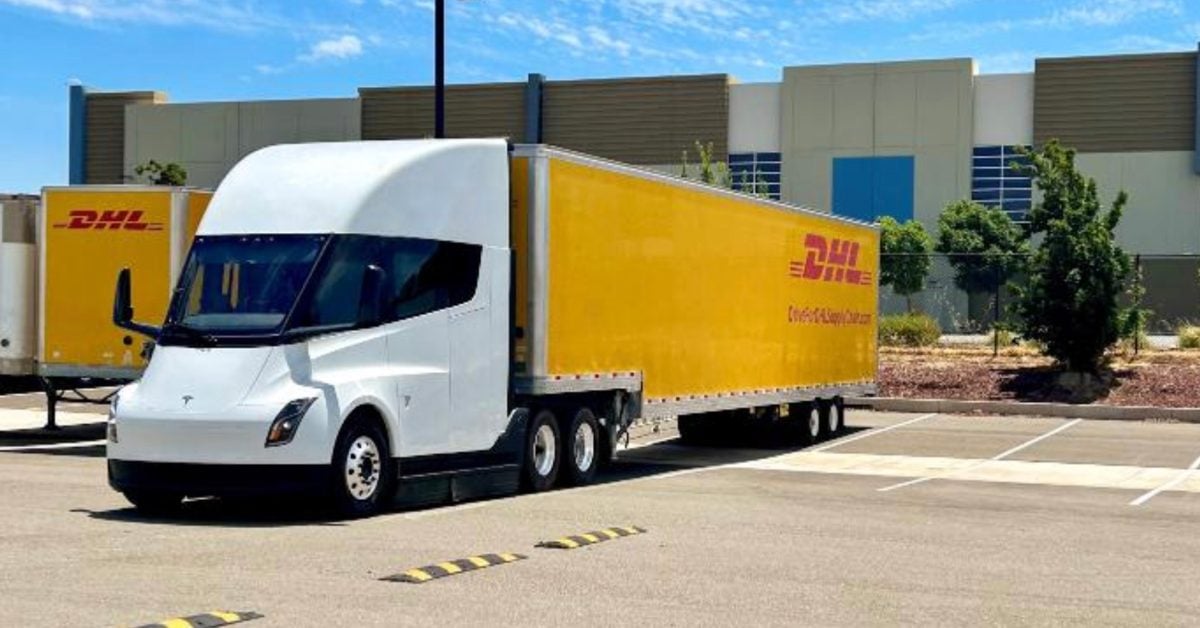DHL says that it was able to confirm that the Tesla Semi is capable of 500 miles on a single charge with a full load.
But more importantly, DHL confirmed that it achieved an efficiency of 1.72 kWh/mile on average during its two-week trial:
During the trial, the trial vehicle averaged 1.72 kWh/mile operating at speeds exceeding 50 mph (80 km/h) on average for over half its time on the road. The result exceeded our expectations and even Tesla’s own rating. That’s exactly what Tesla has been predicting, and in fact, Tesla says that it now does a little better with 1.6 kWh per mile.
kWh per mile means that this is the amount of energy it needs to travel a mile. Considering that 1.7 kWh of electricity can cost as low as $0.15, it opens up the opportunity to greatly reduced the cost of operation of semi trucks.



I saw another source that said they were hauling 75,000lbs total weight and that’s as much as they ever usually haul. So they don’t max out their trucks on a daily basis carrying parcels, so for them whatever the total allowable difference is between an EV/ICE isn’t an issue.
Edit: I guess that if DHL grew as a business though they might eventually start moving more packages around and that would require more weight, but that’s not a today thing.
If so that’s great. I was hearing 10-15% less goods moved for battery semis, which is still probably worth it, but a hard pill to swallow in an industry that is severely understaffed.
We still don’t really know what the difference is for the Tesla Semi but most speculation I’ve seen as we learn more is 1 to 2 tons after the extra 2000lbs EVs are allowed to carry, which is less than 10%